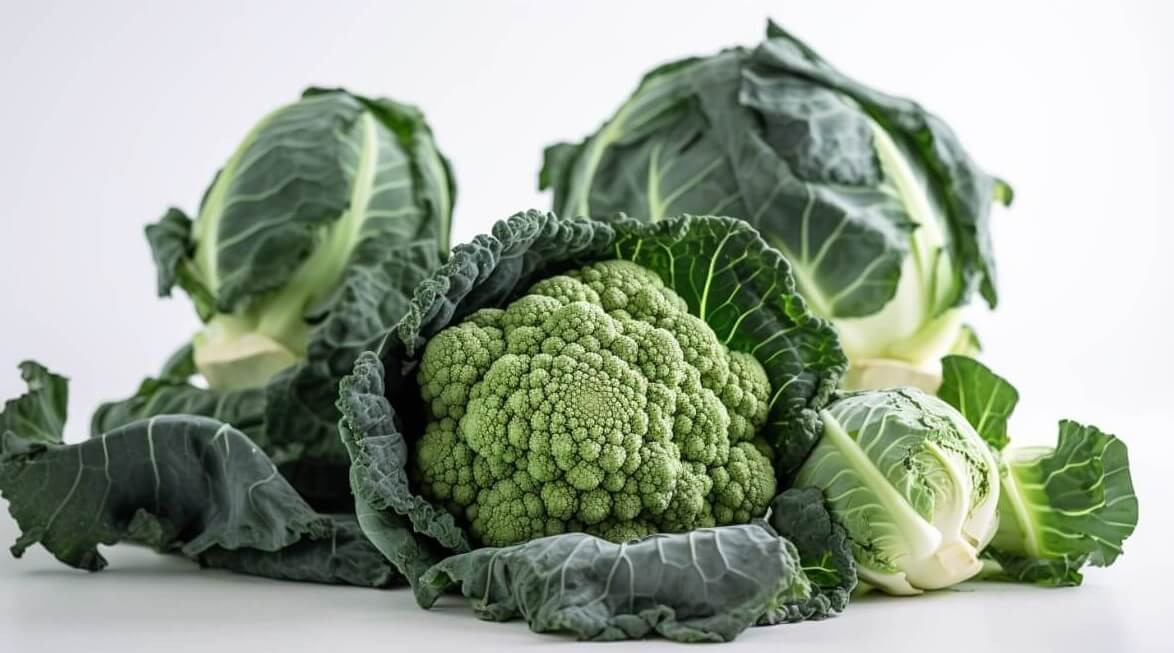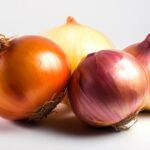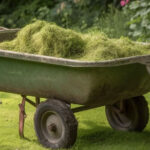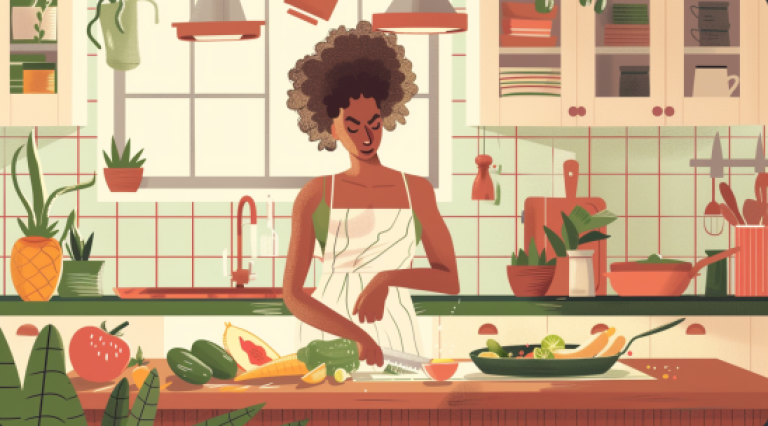Would you prefer to listen to a short podcast discussion about this article? Click on the audio below.
Brassicas, also known as cruciferous vegetables, are a family of nutrient-packed plants that grow well in the UK climate. From the humble Brussels sprout to the mighty cauliflower, these vegetables are a staple in many households. Whether you're an experienced gardener or a beginner, growing brassicas can be a rewarding and delicious experience. In this article, we'll cover everything you need to know about how to successfully grow brassicas, from choosing the right varieties for your climate to harvesting and cooking tips. So, let's get started.
1. Introduction
What are Brassicas?
Brassicas are a group of vegetables that belong to the mustard family. They are also known as cruciferous vegetables due to the cross shape of their flowers. Popular varieties include broccoli, cauliflower, kale, Brussels sprouts, and cabbage.
Why Grow Brassicas?
They are hardy vegetables that can withstand cold and wet weather, making them perfect for growing in the UK. They are also full of nutrients and make a great addition to any healthy diet.
Benefits of Growing Brassicas
Growing these plants means you can have access to fresh, organic produce all year round. Brassicas are also a low-maintenance crop and can be grown in containers, making them a great choice for those with limited space.
2. Choosing the Right Brassicas for the UK Climate
Understanding the UK Climate Zones
The UK climate can vary greatly depending on the region. It is essential to understand your climate zone before planting your brassicas to ensure they thrive.
Varieties Suitable for UK Climate
Brassicas that are suitable for the UK climate include cauliflower, broccoli, kale, Brussels sprouts, and cabbage.
When to Plant Each Variety
Each variety has a different growing season. Cabbage, for example, is best planted in early spring, while Brussels sprouts are best planted in late spring.
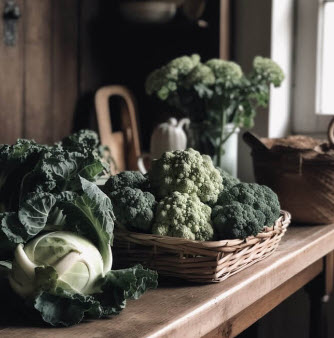
3. Preparing Soil and Planting
Soil Preparation
Brassicas require well-draining, nutrient-rich soil. Before planting, it is crucial to prepare the soil by digging in compost or well-rotted manure.
Planting Brassicas
When planting, it is essential to plant them at the right depth and spacing to allow for optimal growth.
Spacing and Depth for Each Variety
The spacing and depth for each variety of brassica may differ. For example, cauliflower should be planted 45cm apart, while broccoli should be planted 60cm apart.
4. Caring for Brassicas Throughout the Growing Season
Watering
Brassicas require consistent watering throughout the growing season. Be sure to water them deeply but avoid waterlogging the soil.
Fertilizing
Fertilize your brassicas with a balanced organic fertilizer every few weeks throughout the growing season.
Weeding
Weed regularly to ensure that your brassicas can access all the nutrients they need to grow.
Protecting Brassicas from Pests and Diseases
Brassicas are susceptible to pests and diseases such as cabbage white butterflies, aphids, and downy mildew. Protect your crop by using insect nets and organic pest control methods.
5. Common Pests and Diseases
When growing brassicas in the UK, it's important to be aware of common pests and diseases that can affect your crops. Here are some of the most common issues:
Identification of Common Pests and Diseases
Cabbage White Butterfly: These butterflies lay their eggs on leaves, which hatch into caterpillars that munch on the leaves, making holes and sometimes even completely destroying the plant.
Clubroot: This is a soil-borne disease that causes the roots to swell and the plant to wilt. It's most commonly found in acidic soils.
Black Rot: This bacterial disease can cause leaves to turn yellow and wilt, and can also cause dark spots on the stems and heads of the plants.
Prevention and Treatment
To prevent the cabbage white butterfly, cover your plants with netting or fleece. To prevent clubroot, test your soil pH and add lime if it's too acidic. To prevent black rot, make sure to rotate your crops and avoid planting brassicas in the same spot year after year. If you do encounter any of these issues, remove the affected plants immediately and dispose of them away from your garden.
6. Harvesting and Storing
Knowing when to harvest your crop is key to getting the best flavour and nutrition out of your plants. Here's what you need to know:
When to Harvest Each Variety
Cabbage:
Harvest when the heads are firm and full.
Broccoli:
Harvest when the heads are firm and tight, and before the flowers open.
Brussel Sprouts:
Harvest after the first frost, when the sprouts are firm and green.
Kale:
Harvest individual leaves as needed, or cut the whole plant at once when it's reached the desired size.
How to Harvest Without Damaging the Plant
When harvesting, use a sharp knife or scissors to cut the stem cleanly. Avoid pulling or twisting the plant, as this can damage the roots and affect future growth.
Storing
Your plants can be stored in the refrigerator for up to a week. To extend their shelf life, blanch them in boiling water for a few minutes, then freeze them in airtight containers.
7. Creative Ways to Cook and Enjoy Brassicas
Brassicas are a versatile and nutritious vegetable that can be prepared in many ways. Here are some popular recipes in the UK:
Popular Recipes
Cabbage: Cabbage rolls, coleslaw, stir-fry.
Broccoli: Broccoli and stilton soup, roasted broccoli with garlic and lemon, broccoli and cheddar quiche.
Brussel Sprouts: Roasted brussel sprouts with bacon and maple syrup, brussel sprout gratin, brussel sprout and apple salad.
Kale: Kale chips, kale and quinoa salad, kale pesto pasta.
Health Benefits
Brassicas are a great source of vitamins C, K, and A, as well as dietary fibre and antioxidants. They have been shown to have anti-inflammatory and cancer-fighting properties and can be a valuable part of a healthy diet.
8. Troubleshooting Common Growing Problems
Despite your best efforts, sometimes problems can still arise when growing brassicas. Here are some common issues and how to address them:
Yellowing Leaves
Yellowing leaves can be a sign of nutrient deficiency, particularly nitrogen. Make sure your soil has enough nitrogen, or supplement it with a nitrogen-rich fertilizer.
Poor Growth
If your plants are not growing well, it could be a sign of inadequate sunlight, poor soil quality, or overcrowding. Make sure your plants have enough space to grow and are getting enough sunlight and nutrients.
Wilting
Wilting can be a sign of over- or under-watering, or a fungal disease such as fusarium wilt. Make sure your plants are getting consistent and adequate water, and remove any affected plants immediately to prevent the spread of disease.
In conclusion, growing these crops can be a fun and rewarding experience. By following the steps outlined in this article, you can ensure a successful harvest of these nutrient-packed vegetables. Whether you enjoy them roasted, steamed, or stir-fried, brassicas are a versatile addition to any meal. So, get your gardening gloves on and start growing your own delicious greens today!
FAQ
What is the best time to plant brassicas?
Brassicas can be planted in the UK in the spring or the autumn. The exact timing will depend on the specific type of brassica you are growing and your location within the UK. Generally, it is best to aim for a planting date when the soil is moist and the risk of frost has passed.
How do I protect my plants from pests and diseases?
Pests and diseases are a common problem with this crop. To protect your plants, it is important to keep them well-fed and watered and to regularly inspect them for signs of trouble. You can also use natural pest control methods such as companion planting, netting, and manual removal of pests.
What are some common problems encountered when growing brassicas?
Common problems encountered include yellowing leaves, poor growth, and wilting. These issues can be caused by a variety of factors, including pests, diseases, and poor soil conditions. By following the care tips outlined in this article, you can prevent many of these problems and ensure a healthy harvest of brassicas.
If you are keen on organic gardening, check out The Soil Association website
If you need any further information or assistance with this article, don't hesitate to Contact Us
